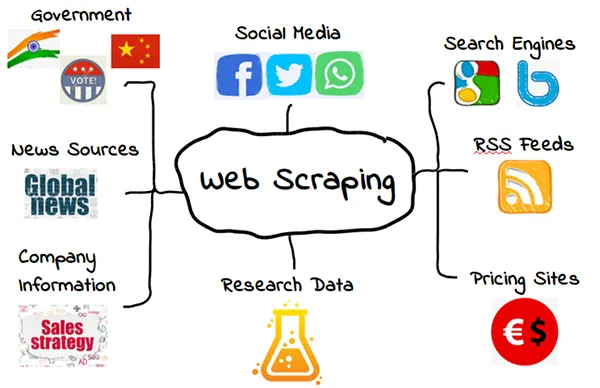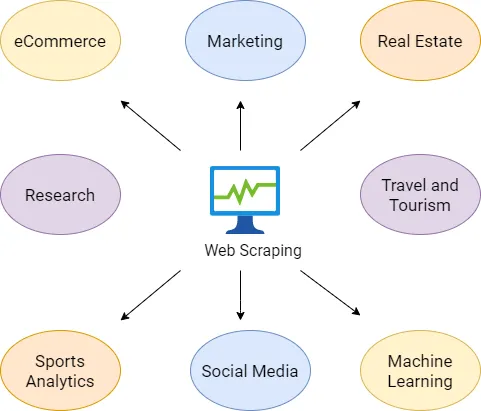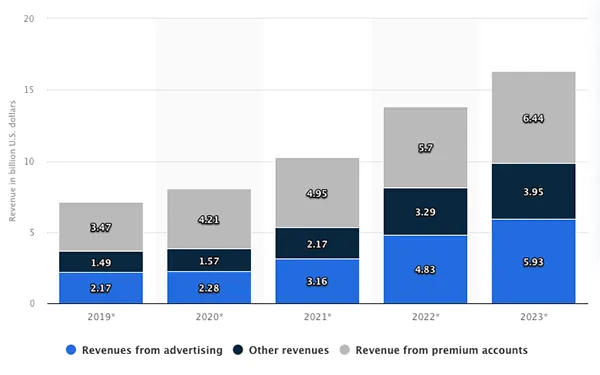Mastering LinkedIn Web Scraping: A Step-by-Step Guide to Gleaning Professional Insights
Starting with the fact that LinkedIn (the world’s largest professional network) is full of prospects and
Starting with the fact that LinkedIn (the world’s largest professional network) is full of prospects and recently, LinkedIn scrapping has been enormously popularized. For those who don’t know about it, technically, scrapping is a computational procedure that systematically retrieves details on a website’s page.
To put it simply, it is the process of extracting valuable information from a social media site.
Since, this platform is believed to be the storehouse of personal and professional details including profiles, jobs, and company pages. How is the scraping possible? This is possible by the power of automation.
Due to the exponential growth of this platform, there are endless opportunities to leverage the details scrapped there. Hence, LinkedIn web scraping is where this approach’s effectiveness comes from.
Find this guide by your side to learn its subtleties. This will definitely benefit you for all the sites, not just LinkedIn, and guide you to navigate the complexity of ethics and legal landscapes.
An Overview of LinkedIn Web Scraping
By it, we mean the automatic procedure of acquiring data from LinkedIn. This approach is no doubt the most valuable tool for a variety of corporate spectacles, namely, recruitment, sales, marketing, and academic research.
Do You Know?:
Around 77% majority of marketers stated that they notice quality organic results with the help of LinkedIn.
People and companies can obtain a variety of details about employment activities, industry changes, potential leads, and other related issues using scraping the website pages on the site without attending to individual profiles or pages.
Why LinkedIn Web Scraping?
The real pull of the social network’s web-based data extraction is its ability to restructure and turn the unstructured data on the page into structured data that can be used for action. Through scouting for talents, analyzing the job market, or finding business prospects, it provides you with all the data you need as it keeps you informed about the decisions that you make in a very short time.
The Technique of LinkedIn Data Using the Web Scraper

Imagine a scenario, where you can collect contact information from 100 leads in just a few minutes, that would be great right? Likewise, similar possibilities come with the website scrapping. Do follow these techniques to do it the right way:
Choosing the Right Tools
The first thing that you need to do if you want to carry out it is to choose the right tools. The market has different solutions, from simple browser extensions, which are capable of navigating through the complex detail structures of social networking sites, to the more sophisticated software that can do the same.
Fast Fact:
The social networking site “LinkedIn” gets 15x more content impressions than job postings.
When deciding about tools, think about things such as ease of use, capabilities for customization, and, absolutely, adherence to its terms of service to be sure of both ethical compliance and safety.
Setting Up Your Scraper
You are configuring your program to pick out the particular data points that you need to put in place. This may vary from just introducing basic details (e.g., name and position) to detailed data (i.e., employment background, skills, and endorsements).
Being precise with the setup to avoid distortion of the information collected is necessary to increase its quality and relevance.
Ethical and Legal Considerations

Online, some platforms allow legal scrapping, but it doesn’t necessarily mean it’s ethical. It raises several ethical concerns that should be considered. Those are:
Navigating LinkedIn’s Policies
According to their terms of engagement, it is not allowed to use automated tools to infiltrate the sites and as well as collect details without specific authorization. Because of these limitations, operators should approach such activities with a good knowledge of them.
Ethical extraction requires you to follow these terms, up to a certain extent, for example, setting the rate of your requests in order not to overload its servers.
Data Privacy and Use
Besides its policies, the data extraction of the site should be focused on broader ethical and legal considerations, such as the protection of the information’s privacy. The information gathered must be utilized sensitively, using an individual’s right to privacy and the laws in place for protection, like GDPR in European countries, in mind.
Real-Life Usage of LinkedIn Data Scraping for Business

Scrapping can serve various purposes, be it sales, marketing, recruitment, research, etc. Let’s see how:
Recruitment and Talent Acquisition
Having access to its web-based scraping with recruiters, they can build a database of candidates with specific skills and experience, which helps them to improve the speed of talent acquisition.

Statistics:
According to 2022 reports, LinkedIn generated 5.91 billion U.S. dollars. And, by 2027, it is expected to touch 10.35 billion U.S. dollars in advertising revenue.
Therefore, it gives a possibility to identify the list of passive candidates who are outside the job market but are willing to accept the best offer.
Market Research and Sales
To collect information on leads, understand market trends, as well as monitor the competition, existing sales and marketing professionals can take advantage of the website’s scraping tools. This information can be used to implement targeted marketing strategies and individualized sale approaches that would eventually translate to massive consumer conversion.
Conclusion
Extracting details from LinkedIn through web mining can be highly useful in the strategic arsenal of the information-rich professional networking business sphere. Via its automated access to vital details, companies, as well as people, can acquire incredible information about the professional landscape.
Nevertheless, it is vital to carry out the site’s data extraction with a sharp or highly cautious awareness of ethical, legal, and technological factors.
Properly employing the appropriate tools and strategies and respecting the privacy policies and regulations are needed to make the most out of the site’s scraping and to be proud of it in your professional pockets.
Share
















